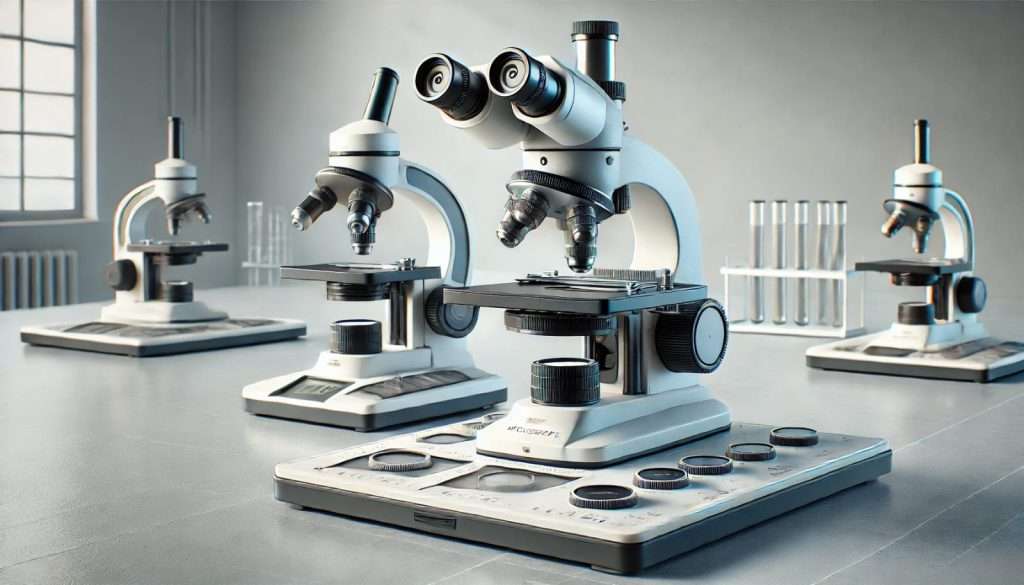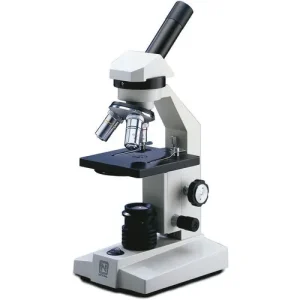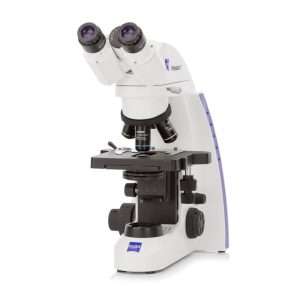Written by Microscopehunt Authority
.

Microscopes are powerful tools that allow us to see tiny objects that are invisible to the naked eye. Whether you are a student, a hobbyist, or just curious about the microscopic world, learning how to use a microscope can be exciting and educational. In this guide, we’ll break down the steps to effectively use a microscope, making it easy for anyone to understand.
Understanding the Parts of a Microscope
Before you start using a microscope, it’s essential to familiarize yourself with its parts. A standard microscope consists of several important parts:
Eyepiece (Ocular Lens):
You look through using this lens, it provides a magnification of 10X
Objective Lenses:
These are located near the stage and come in various magnifications (e.g., 4x, 10x, 40x, 100x).
Stage:
This is the flat surface where you set your slides.
Illuminator:
This is the light source, either built-in or external, that illuminates the slide.
Focus Knobs:
The coarse and fine focus knobs modify the distance between the objective lens and the slide, enabling precise focusing on the specimen.
Understanding these parts will help you operate the microscope more effectively.
Preparing Your Slide

To observe a specimen, you need to prepare a slide. Here’s how to do it:
Select Your Specimen:
Choose something small, like a leaf, a drop of pond water, or a prepared slide from a kit.
Clean the Slide:
Wipe the slide with a soft cloth to ensure it’s clean.
Add the Specimen:
For liquid samples, apply a drop onto the slide to prepare it for viewing. For solid samples, position the specimen in the middle.
Cover the Specimen:
If necessary, use a coverslip to protect the specimen and keep it flat. This provides a more detailed perspective.
Setting Up the Microscope
Now that you have your slide ready, it’s time to set up the microscope:
Position the Microscope:
Place the microscope on a flat, stable surface with good lighting.
Turn On the Light:
If your microscope has a built-in light, switch it on. Adjust the brightness as needed.
Select the Objective Lens:
Start with the lowest magnification objective lens (usually 4x). This helps you find your specimen more easily.
Focusing is crucial for getting a clear view of your specimen
Secure the Slide on the Stage:
Attach the slide firmly using the stage clips.
Use the Coarse Focus Knob:
Slowly turn the coarse focus knob to bring the stage up to the lowest objective lens. Look through the eyepiece while you make adjustments.
Center the Specimen:
Move the slide around until you see the specimen in the center of your field of view.
Switch to a Higher Magnification:
Once focused, change to a higher magnification lens. Use the fine focus knob to enhance the image clarity.
Observing the Specimen
Now that you have a focused image, take your time to observe the specimen:
Take Notes:
Write down any interesting details you see. This could include shapes, colors, and structures.
Draw What You See:
Sketching can help you remember details and understand the specimen better.
Use Different Objective Lenses:
Experiment with different magnifications to see how it changes your view.
Cleaning Up After Use

After you have finished using the microscope, it’s essential to clean up properly:
Turn Off the Light:
Switch off the illuminator to save energy.
Remove the Slide:
Lift the slide off carefully from the stage. If you’re using a prepared slide, put it back in its storage.
Clean the Eyepiece:
Wipe the eyepiece with a soft cloth to remove any fingerprints.
Protect the Microscope:
If you have a dust cover, use it to shield the microscope from dust.
Tips for Effective Microscopy
To enhance your microscopy skills, keep these tips in mind:
Be Patient:
Finding the right focus can take time. Don’t rush the process.
Use Good Lighting:
Ensure your workspace is well-lit to help you see better.
Practice Regularly:
The more you use the microscope, the more comfortable you will become.
Explore Different Specimens:
Try looking at various items, such as onion skin, bacteria, or pond water, to discover the diversity of the microscopic world.
Conclusion
To wrap up, knowing how to use a microscope is a valuable skill that opens up a world of discovery. By following this guide on how to use a microscope, you can easily get started and gain confidence in your observations. Understanding how to use a microscope will allow you to explore the tiniest details of the natural world. Remember, practice is key to becoming proficient in how to use a microscope, so don’t rush the process. With time, you’ll master how to use a microscope and unlock its full potential. Keep experimenting and learning as you become more comfortable with how to use a microscope in various settings
